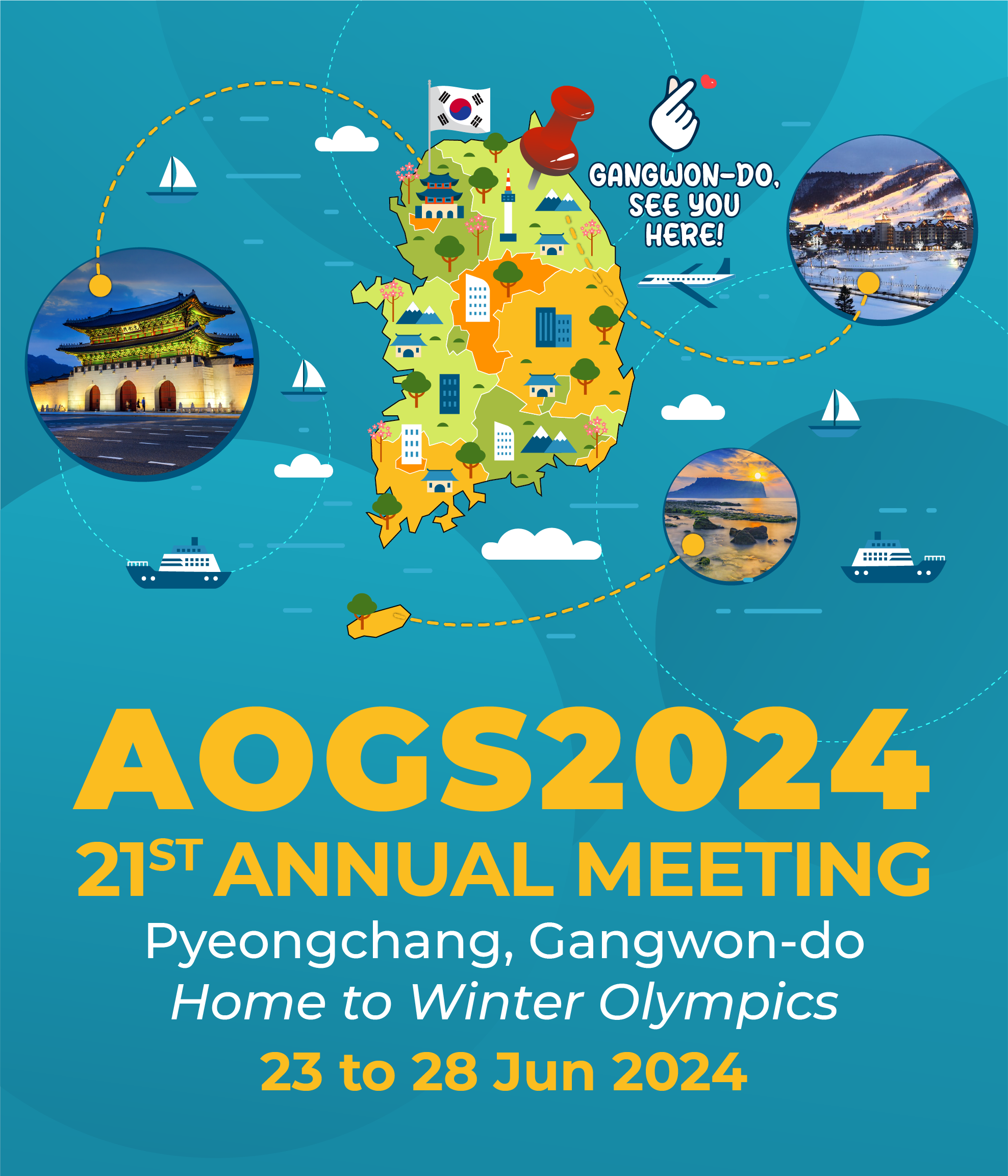
Professional Development Activities
Panels & Workshops | Public Lectures | Scientist Led Field Trips | Mentoring Program
Panels & Workshops
Program uses Korean standard time and is 9 hours ahead of GMT (GMT+9)
Transforming Hydrology by Integrating Remote Sensing, Modeling, and Data Sciences
Wednesday, 26 June 2024 | 2:00pm – 3:30pm | Luge Hall, Alpensia Convention Center
Program uses Korean standard time and is 9 hours ahead of GMT (GMT+9)
| Convener: | Eunsang Cho, Texas State University Hyunglok Kim, Gwangju Institute of Science and Technology |
| Speakers: |
Ana P. Barros, University of Illinois at Urbana-Champaign
John Bolten, Hydrological Sciences Laboratory, NASA Goddard Space Flight Center Venkataraman Lakshmi, University of Virginia Zong-Liang Yang, Department of Earth and Planetary Sciences, University of Texas |
| Session Description: | Remote sensing and modeling have transformed hydrologic science and applications. Spaceborne missions are dedicated to interlinked global hydrologic processes. Furthermore, computational techniques are accelerating analyses of these data and integrating them into the modeling. However, there are existing gaps and challenges the hydrologic community faces such as data uncertainties, limited model physics, and inequitable data availability across the world. How will the hydrologic community use these resources to better understand the world's water resources and to overcome related challenges facing society, particularly in Asia and Oceania. In this invited talk session, we will discuss the benefits, challenges, and opportunities of remote sensing for advancing hydrologic research, integrating multidisciplinary and multisensor data, and employing data assimilation and AI/machine learning. |
Co-creating the Future of CMIP (Coupled Model Intercomparison Project)
Thursday, 27 June 2024 | 11:00am – 12:30pm | Luge Hall, Alpensia Convention Center
Program uses Korean standard time and is 9 hours ahead of GMT (GMT+9)
| Convener: | Beth Dingley, European Space Agency |
| Speakers: |
Tomiki Miyakawa, The University of Tokyo
Douglas Rao, North Carolina State University |
| Session Description: | The World Climate Research Programme’s (WCRP) Coupled Model Intercomparison Project (CMIP) has coordinated international climate model experimentation, to develop a better understanding of past, present, and future climate change. Over four decades, CMIP has grown in scope and complexity, targeting climate science addressing the WCRP objectives and serving IPCC Assessments. CMIP6, the latest phase, yielded more than 25 PB of data, with contributions from 131 models, from 48 institutions, representing 26 countries. Work has commenced on future CMIP7 planning. The project aims to meet the growing community needs, enabling climate science and providing actionable climate information to aid policymakers. To facilitate next steps, the two panels that oversee the project, the CMIP and Working Group on Coupled Modelling (WGCM) Infrastructure (WIP) Panels have established seven Task Teams to guide CMIP7 scope and design and facilitate coordinated infrastructure development. These aim to increase CMIP’s scientific and social relevance, widen participation, improve data accessibility, and reduce the carbon footprint. We invite our growing community to attend. We will describe ongoing planning, highlight engagement, and feedback opportunities, and invite attendee feedback and participation. The town hall will be presented by members of the CMIP Panel, Fresh Eyes on CMIP group, and CMIP7 Task Teams. |
Workshop: Making the Most of CMIP Data: Analysis, Access, and Tools
Thursday, 27 June 2024 | 2:00pm – 3:30pm | Luge Hall, Alpensia Convention Center
Program uses Korean standard time and is 9 hours ahead of GMT (GMT+9)
| Convener: | Beth Dingley, European Space Agency |
| Speakers: | Douglas Rao, North Carolina State University Froila Palmeiro, Centro Euro-Mediterraneo sui Cambiamenti Climatici Evgenia Galytska, Bremen University Alistair Duffey, University College London Nebiyu Tekesa, Arba Minch University Gen Tolhurst, The Bureau of Meteorology Beth Dingley, European Space Agency |
| Associated Sections: | AS, BG, HS, IG, OS (Not Limited To) |
| Description: | The Coupled Model Intercomparison Project (CMIP) is an international climate modelling project, designed to better understand past, present, and future changes in the climate. More than 50 modelling centres around the world participated in CMIP6, which has already generated in excess of 14 PB of unique data. From its inception, there has been a focused effort to make the model intercomparison data available to scientists beyond the climate modelling community. With more data access platforms and analysis tools being created every year to support the use of CMIP data, it can be difficult to know where to begin. Primarily led by members of the new Early Career Scientists group, Fresh Eyes on CMIP, this workshop will provide an overview of ways to access CMIP data and present some useful analysis tools and methods to help with using it. The key topics across the session will cover:
|
Workshop: Exploring High-Resolution Downscaled Climate Projections
Thursday, 27 June 2024 | 4:00pm – 6:30pm | Luge Hall, Alpensia Convention Center
Program uses Korean standard time and is 9 hours ahead of GMT (GMT+9)
| Convener: | Weile WANG, NASA Ames Research Center |
| Instructors: | Weile WANG, NASA Ames Research Center Hugo Kyo LEE, NASA Jet Propulsion Laboratory Koji DAIRAKU, University of Tsukuba Dong-Hyun CHA, Ulsan National Institute of Science and Technology Tsengdar LEE, NASA Headquarters |
| Associated Sections: | AS, BG, HS, IG, OS (Not Limited To) |
| Description: | The goals of this workshop are:
|
Interdisciplinary Panel: From Lab to Society: Showcasing South Korea's Climate-Tech Entrepreneurial Scientists
Friday, 28 June 2024 | 11:00am – 12:30pm | Pyeongchang Hall III, Alpensia Convention Center
Program uses Korean standard time and is 9 hours ahead of GMT (GMT+9)
Speakers:
- Hyundai Motor Chung Mong-Koo Foundation: John Choi (Secretary General)
- Green Society: Jiseong Kang (CEO, Korea Grid Forming), Sujong Lee (Korea University), Dongsoo Hwang (CEO/Professor, BlueCaborn/POSTECH)
- Climate Tech Center: Su-Jong Jeong (Director)
Overview:
- Session Opening & Introduction
- About Hyundai Motor CMK Foundation & Green Society
- About Startups and Technologies
- Panel Discussion and Q&A
Session Description:
In the era of the escalating climate crisis, the significance of climate technology to mitigate and adapt to these changes is on the rise. There is a growing need for the research and development of various technologies particularly those grounded in the expertise of Geoscience, and the widespread adoption of climate tech based on these innovations. In this session, we will firstly introduce the overall concept and current status of climate technology, followed by a leading climate tech company to share their insights into the commercialization process of the technologies and discuss the future of the climate tech industry. Lastly, we intend to explore avenues for collaboration by discussing the vision and activities of the Hyundai Motor Chung Mong-Gu Foundation, which fosters and supports the climate tech industry.
Key Takeaways:
- CMKF’s vision and Green Society overview, exploring the possibility of domestic and international cooperation
- Explore how a research-based approaches are vital to the success of climate-tech solutions
Interdisciplinary Panel: Climate Change and Infrastructure Reassessment
Friday, 28 June 2024 | 2:00pm - 3:30pm | Pyeongchang Hall III, Alpensia Convention Center
Program uses Korean standard time and is 9 hours ahead of GMT (GMT+9)
Disasters occur or are mitigated based on the relative magnitude between the ‘hazard’ factor to drive them and the ‘societal capacity’ factors to withstand them. Non-stationarity in climate, which began to be detected in the late 20th century, have now become widespread to the point that they are noticeable by the general public. In other words, climate change is increasingly recognized as a major driver of extraordinary disasters worldwide, and it has become the focus of numerous studies in almost every country. However, there is relatively less public interest in the societal capacity required to cope with disasters. Vulnerability, especially concerning ‘aging’ social infrastructure, is undoubtedly crucial especially in developed nations with a long history of urban development. In summary, we are confronting to a combined difficulty with two major challenges, the ‘changing climate’ and the ‘aging infrastructure’. Taking South Korea as an example, the first multipurpose dam, Soyanggang Dam, celebrated its 50th anniversary in 2023, and from now on, a multitude of social infrastructure will age beyond 50 years in the coming years. This session is designed to re-evaluate the issue of aging social infrastructures in the context of climate change and to discuss forward-looking scientific and technological alternatives and policy directions to address it.
Workshop: A Mini Tutorial for Ensemble Data Assimilation and the Data Assimilation Research Testbed with Applications for the Model for Prediction across Scales
Friday, 28 June 2024 | 11:00am - 12:30pm | Pyeongchang Hall II, Alpensia Convention Center
Program uses Korean standard time and is 9 hours ahead of GMT (GMT+9)
| Convener: | Lili Lei, Nanjing University |
| Instructors: | Jeffrey Anderson, U.S. Geological Survey Soyoung Ha, National Center for Atmospheric Research |
| Associated Sections: | AS, HS, OS (Not Limited To) |
| Description: | This workshop is designed to be a short course that provides a practical introduction to ensemble filters from theories to tools along with realistic applications. There will be two main lectures, one is for “Introduction to Ensemble Data Assimilation” and the other is for “Introduction to the Data Assimilation Research Testbed (DART) and its Applications for the Model for Prediction Across Scales (MPAS)”. Basic ensemble filter algorithms will be covered along with an overview of extensions required for successful application in large earth system models. Various flavors of ensemble filters can be tested through the Data Assimilation Research Testbed (DART), a community software facility for ensemble filter data assimilation. DART can produce high-quality weather predictions but can also be used to build a comprehensive forecast system for any prediction model and observations. DART has been applied to NWP at scales ranging from sub-kilometer to global, but also to space weather, oceans, sea ice, terrestrial systems, hydrologic models, and many other earth system applications. This workshop is open for all participants to AOGS who have interests. Attendees will leave with a solid foundation that will allow them to explore using DART for existing models and observations, especially the Model for Prediction Across Scales (MPAS) for global and regional applications. They will also have a basic understanding of what would be required to develop DART assimilation capabilities for new models or observations. |
Public Lectures
Program uses Korean standard time and is 9 hours ahead of GMT (GMT+9)
| Date/Time | Room |
| The Meaning of Life and Our Place in The Universe Wednesday, 26 June 2024, 12:30pm – 2:00pm |
Daegwallyeong II, Alpensia Convention Center |
| Jupiter's North Polar Mid-IR Hotspot: The 44-Year Mystery May Now Be Solved (CANCELLED) Thursday, 27 June 2024, 12:30pm – 2:00pm |
Emerald, Tower Condominium, YongPyong Resort |
Program uses Korean standard time and is 9 hours ahead of GMT (GMT+9)
The Meaning of Life and Our Place in The Universe
Wednesday, 26 June 2024 | 12:30pm – 2:00pm | Daegwallyeong II, Alpensia Convention Center
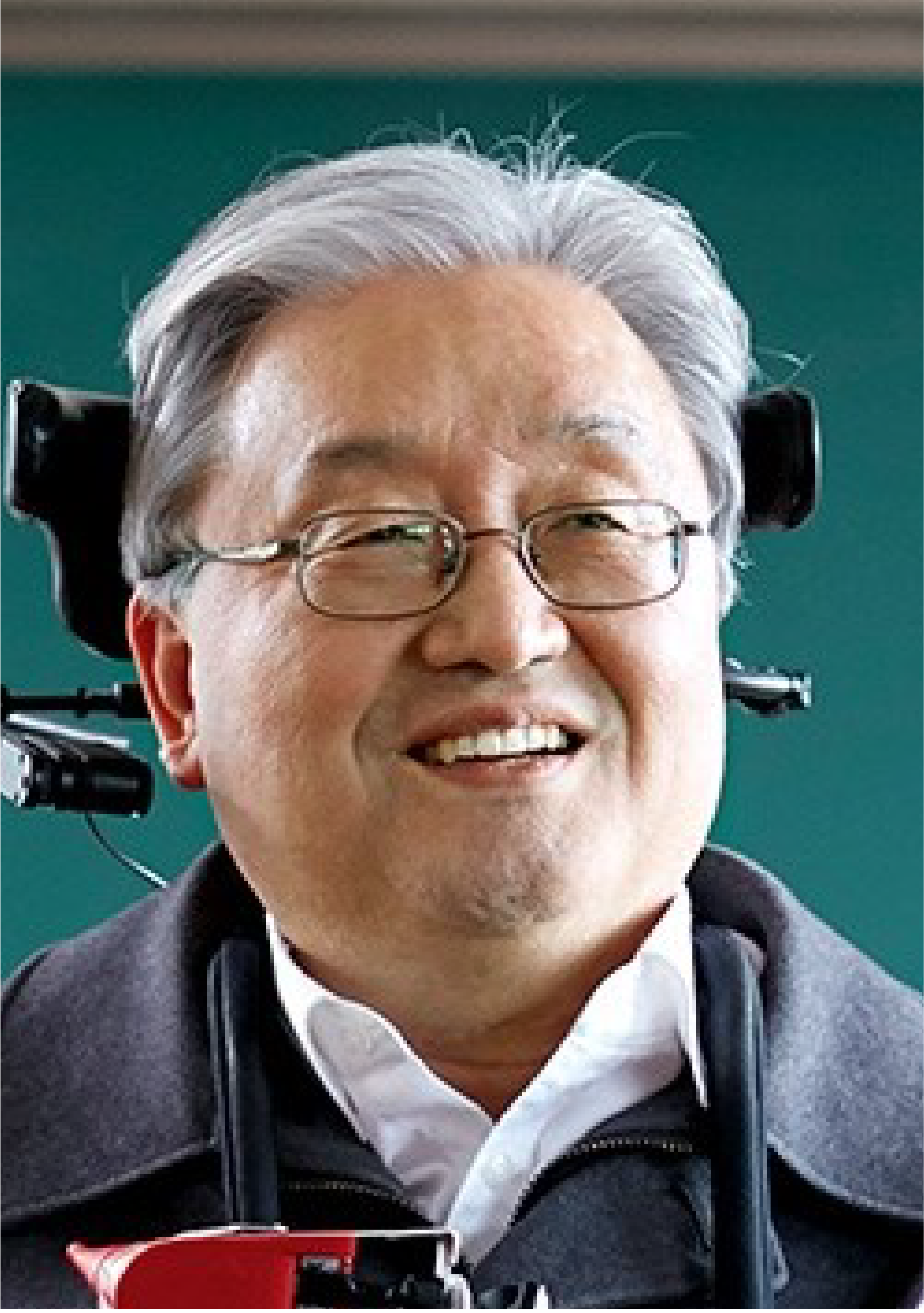
Prof Sang-Mook Lee
Marine Geoscientist
Seoul National University
Abstract
Life has unexpected twists and turns. I became quadriplegic, completely paralyzed neck down, during a geological field trip when the van that I was driving rolled over. We seldom think about it but our existence on this planet is finite in time. The finiteness is said but good because, as Nicholas Humphrey said in his book, if we cannot travel through the sea of eternity, the more significant is this small island that we stand on. Being an earth scientist is a blessing because we understand the vastness of time and space and appreciate what it took for life to begin some 4 billion years ago on this barren planet and for such life to advance into a universal civilization. At the same time, we are constantly reminded that the advanced civilization that we built can be wiped out suddenly by Mother Nature. I became a big-picture person after my accident 18 years ago. In this talk, I would like to share my thoughts and emphasize the values we must uphold as global citizens.
Program uses Korean standard time and is 9 hours ahead of GMT (GMT+9)
Jupiter's North Polar Mid-IR Hotspot: The 44-Year Mystery May Now Be Solved (CANCELLED)
Thursday, 27 June 2024 | 12:30pm – 2:00pm | Emerald, Tower Condominium, YongPyong Resort
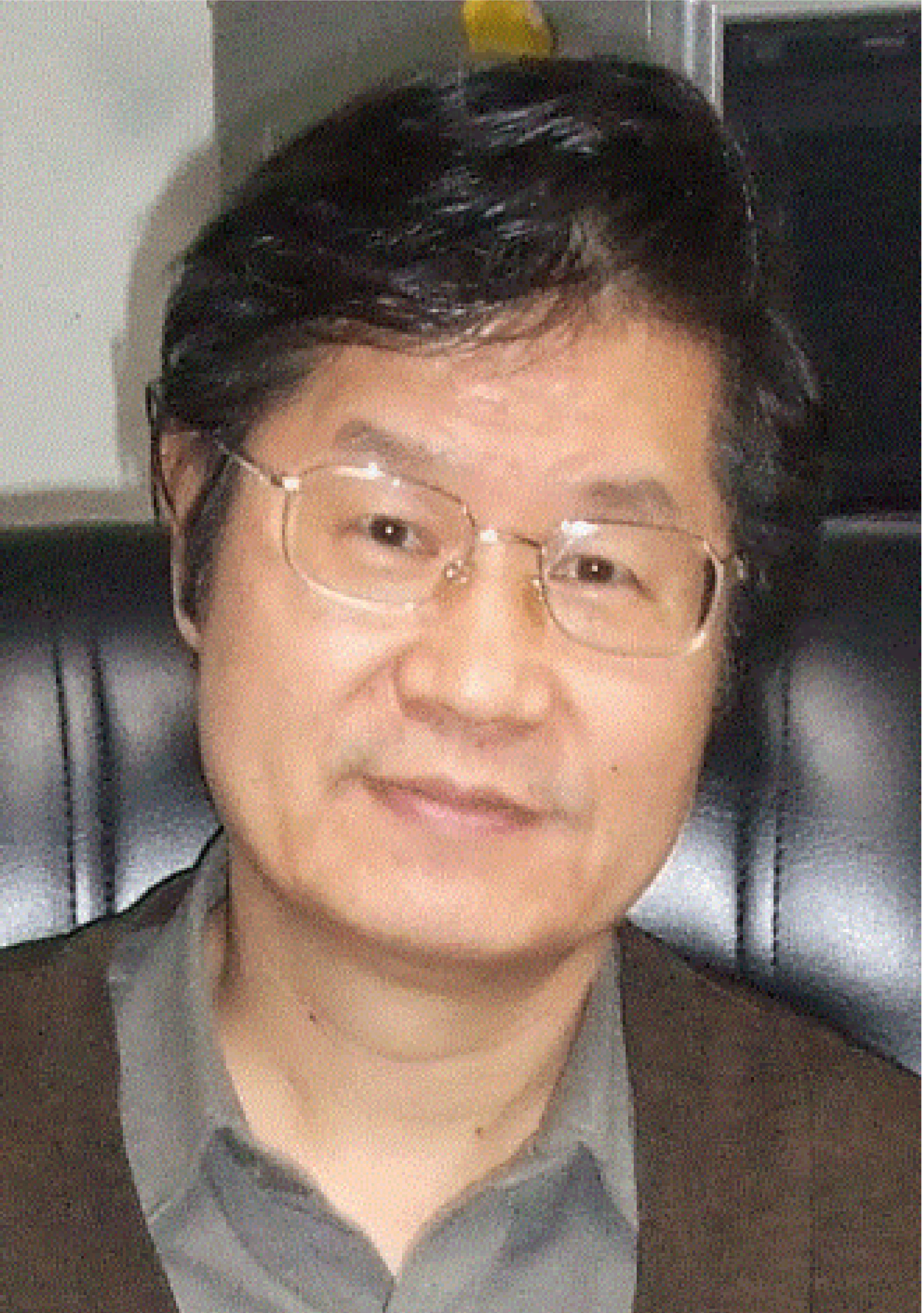
Prof Sang Joon Kim
Planetary Scientist
Kyung Hee University
Abstract
Jupiter's mid-infrared north polar hot spot, ~20 K warmer than the surrounding polar stratosphere, has been observed for over four decades. Its unusual appearance and longevity have not been fully understood, although several mechanisms have been proposed to explain its existence. We utilized the Gemini Near-Infrared Spectrograph at Gemini/North telescope to spectrally map Jupiter in the 3-micron emission lines of CH4 (methane) and C2H6 (ethane) across Jupiter's northernmost latitudes where its mysterious north polar hotspot is located. These lines are emitted high above the stratosphere and are excellent monitors of auroral energy being deposited downward into the stratosphere. By comparing the emission from CH4 with that from C2H6, we demonstrate that the transient heating and bright line emissions from these molecular species are caused by increased precipitation of high-speed auroral particles, which are produced in Jupiter's turbulent magnetosphere and ionosphere near its poles. The heating extends down into the stratosphere where the hotspot is located. At that depth, heating up and cooling off is much more gradual than at higher altitudes. Additionally, the free flow of warm gas in the hot spot to the surrounding polar regions is resisted by recently detected polar stratospheric jets associated with polar fronts. Other heating mechanisms proposed in the literature, such as Joule heating, polar haze heated by sunlight, etc., seem only the secondary mechanisms that follow atmospheric ionization caused by the energetic particle bombardment.
Scientist Led Field Trips
Program uses Korean standard time and is 9 hours ahead of GMT (GMT+9)
| Date/Time | Fees |
| PD01: Yeongyeon Cave and Seong-Ryu Cave Monitoring Tuesday, 25 June 2024 (All Day) |
40 Attendees Maximum |
| PD02: Baeng-nyong Cave Wednesday, 26 June 2024 (Half Day – PM) |
20 Attendees Maximum |
| PD03: Hantangang River UNESCO Global Geopark
Thursday, 27 June 2024 (All Day) |
40 Attendees Maximum |
Information
- Participants must be AOGS2024 attendees and be at least eighteen years old. Please complete your conference registration early.
- Full payment is needed to secure your reservation. After making your payment, you will receive an email confirmation within a day or two.
- If registrants cancel or withdraw, there won’t be a refund. However, AOGS will refund payment if the field trip is cancelled owing to low participation.
- Please know that participants are responsible for obtaining their own insurance and that field trips do not include insurance.
- Participants on field trips agree to hold AOGS harmless from any claims resulting from losses or injuries they may have experienced while on the excursions.
Program uses Korean standard time and is 9 hours ahead of GMT (GMT+9)
PD01 Yeongyeon Cave and Seong-Ryu Cave Monitoring
Tuesday, 25 June 2024 (All Day)
| Group Size | : 40 Maximum |
| Per Person Fee | : SGD 190 (Includes Lunch) |
| Guides: | : Jasper WASSENBURG & Daniel M. CLEARY |
| Meeting Point | : Alpensia Convention Center Shuttle Bus Pick-Up |
| Schedule | |
| 08:00 | Leave Conference Centre by Bus to Seongryu Cave Explanation of Cave Climate Archives in the Bus |
| 09:30 | Arrive at Seongryu Cave |
| 09:30 – 10:00 | Presentation Speleothems and Guano as Climate Archives (Outside if Weather Permits) |
| 10:00 – 12:00 | Enter Seongryu Cave in Groups of 10 – 11 People, including one Scientist to Explain about Formations |
| 12:00 – 13:00 | Lunch Time at Restaurants in the Area of Seongryu Cave |
| 13:00 – 14:15 | Drive to Yongyeon Cave |
| 14:15 – 14:45 | Presentation on Cave Monitoring by Daniel CLEARY |
| 14:45 – 16:45 | Enter Yongyeon Cave in Groups of 10 People, including one Scientist to Explain about Cave Formations / Dripsites |
| 16:45 – 18:00 | Drive Back to Conference Centre |
Description
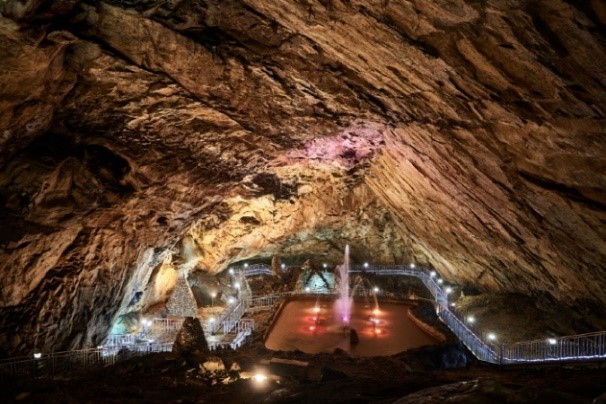
Yeongyeon Cave is a designated Gangwon-do monument. It is a dry natural limestone cave located in the highest area in the country on a limestone stratum and is a habitat for 38 species of rare creatures, including long-legged blind beetles. Scientific data from the Yeongyeon Cave monitoring program will be presented at the cave site. It will show how cave monitoring helps to interpret speleothem climate proxies.
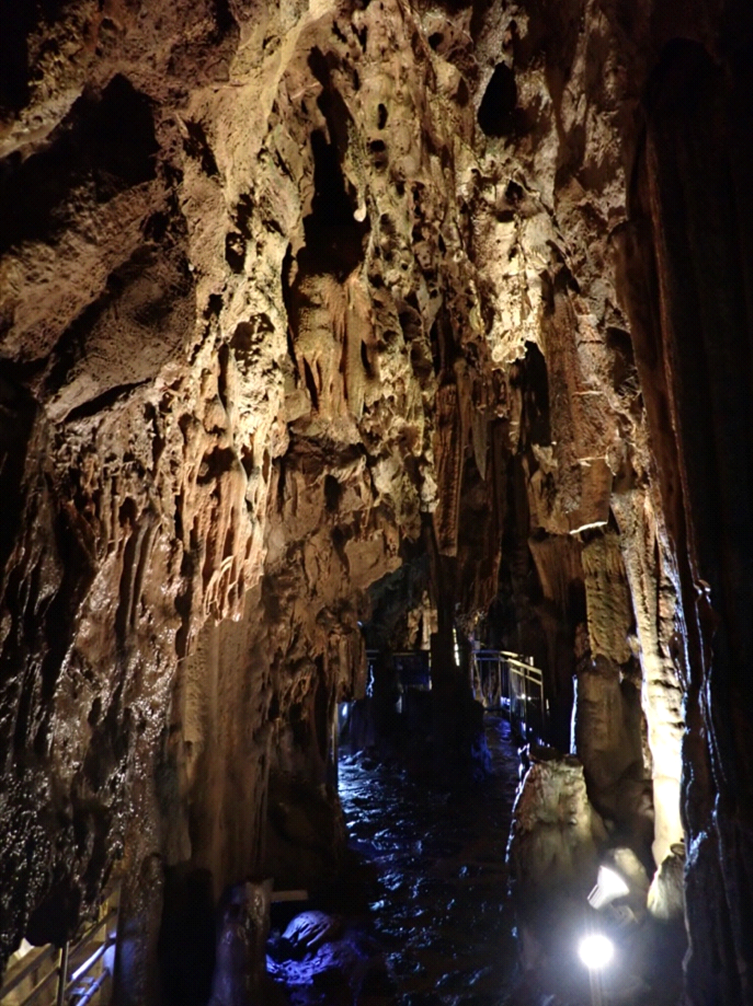
Seong-Ryu Cave was designated as a Natural Monument in 1963 for its educational and natural values. This is a limestone cave with impressive speleothem formations. The cave contains a bat guano deposit that according to radiocarbon dating was deposited between 6000 and 150 years before present. The cave has 870 meters of passages with several pools with standing water that reflect ground water level.
Program uses Korean standard time and is 9 hours ahead of GMT (GMT+9)
PD02: Baeng-nyong Cave
Wednesday, 26 June 2024 (Half Day – PM)
| Group Size | : 20 Maximum |
| Per Person Fee | : SGD 150 (Includes Lunch) |
| Guides: | : Kyoung-Nam JO & Hee-Jung KIM |
| Meeting Point | : Alpensia Convention Center Shuttle Bus Pick-Up |
| Schedule | |
| 13:00 – 14:30 | Alpensia Resort to Ecological Experience Center for Baeng-nyong Cave |
| 14:30 – 16:30 | Guided Tour into Baeng-nyong Cave |
| 16:30 – 18:00 | Ecological Experience Center for Baeng-nyong Cave to Alpensia Resort |
Description
Baeng-nyong Cave is located in Pyeongchang-gun, Gangwon-do in South Korea. It is precisely located at the boundary of three counties (Pyeongchang-gun, Yeongwol-gun, and Jeongseon-gun). This is the only tourist cave for wild caving tour in South Korea, even though tourists walk over the horizontal passage with a little crawl at narrow passages.

Figure 1. Entrance (the white arrow) of the Baengnyong Cave at Dong River. (copyright, Cave Research Institute of Korea)

Figure 2. Dong River with karst landform near the Baengnyong Cave. (copyright, Cave Research Institute of Korea)
It is situated along Dong River surrounded by beautiful limestone karst area (Figs. 1 & 2). The Cave has been open to public past 8 years since 2010, and it has about 15,000 visitors annually. It is the cave that is still actively forming with beautifully decorated stalactites, stalagmites, flowstones, anthodites and many kinds of other speleothems. During rainy season, the floor can be submerged by water from the Dong River through the collapsed hole connected to the river.

Figure 3. Carbonate speleothems at the large chamber in Passage A. (copyright, Cave Research Institute of Korea)

Figure 4. Stalactites, stalagmites, and columns in Passage A. (copyright, Cave Research Institute of Korea)
Most of the passages show domal in cross section showing the typical shape of vadose passage, even though other shapes are also observed. This cave has been mostly developed along joint planes, whereas some parts of the passages were influenced by strike directions of bedding planes. Cave sediments are mostly composed of muddy sediments with minor contributions of sands and gravels where cave streams are present. Mineralogically, quartz, calcite and illite are dominant minerals in cave sediments.
Various speleothems such as soda straws, stalactites, stalagmites, columns, flowstones, rimstones, cave pearls, curtains (and bacon sheets), helictites, anthodites, cave corals, cave shields, and calcite rafts, etc., are present. Especially, some stalactites and stalagmites with erratic shapes as well as fried-egg stalagmites are the most peculiar speleothems in this cave (Figs. 3-8).
All the distribution of the speleothems are described separately on the floor and on the wall and ceiling. Mineralogy and texture of the speleothems are shown only for the speleothems collected (already broken speleothems). Among the speleothems studied, soda straws, stalactites, stalagmites, rimstones, curtains and rafts are only composed of calcite, whereas cave corals and cave shields are either composed of calcite or of both calcite and aragonite.

Figure 5. Erratic stalagmite (copyright, Cave Research Institute of Korea).

Figure 6. Cave shield and column (copyright, Cave Research Institute of Korea).

Figure 7. Bacon sheet (copyright, Cave Research Institute of Korea).

Figure 8. Flowstone, stalactites, and stalagmites (copyright, Cave Research Institute of Korea).
Program uses Korean standard time and is 9 hours ahead of GMT (GMT+9)
PD03: Hantangang River UNESCO Global Geopark
Thursday, 27 June 2024 (All day)
| Group Size | : 40 Maximum |
| Per Person Fee | : SGD 190 (Includes Lunch) |
| Guides: | : Hee-Jung KIM & Kyoung-Nam JO |
| Meeting Point | : Alpensia Convention Center Shuttle Bus Pick-Up |
| Schedule | |
| 07:30 – 11:00 | Transportation to Yeoncheon from AOGS2024 Venue* |
| 11:00 – 16:00 | Jaein Falls, Jeongokri Paleolithic Site & Jeongokri Paleolithic Museum |
| 16:30 – 19:30 | Transportation back to AOGS2024 Venue |
Description
The Hantangang River UGGp was designated as a UNESCO Global Geopark in 2020. The Hantangang River Geopark is located between two tectonic segments - the Imjingang Belt and the Gyeonggi Massif - at the center of the Korean peninsula, giving way to the geodiversity of the Precambrian, Palaeozoic, Mesozoic, and Cenozoic igneous, metamorphic, and sedimentary rocks which contrasts with other UNESCO Global Geoparks. The most important feature of the Hantangang River Geopark is the Quaternary lava plateau distributed both in South and North Korea through the DMZ. The Hantangang River is a linearly developed stream system along the Chugaryeong Fault System. It shows a unique topography formed by the combination of geological structures, volcanic topography, and river terrain formed by basalt lava flowing along the paleo-channel, which is very rare. This also shows us the linkage of ecological, archaeological, historical, and cultural values with the geological value of the Hantangang River Geopark.
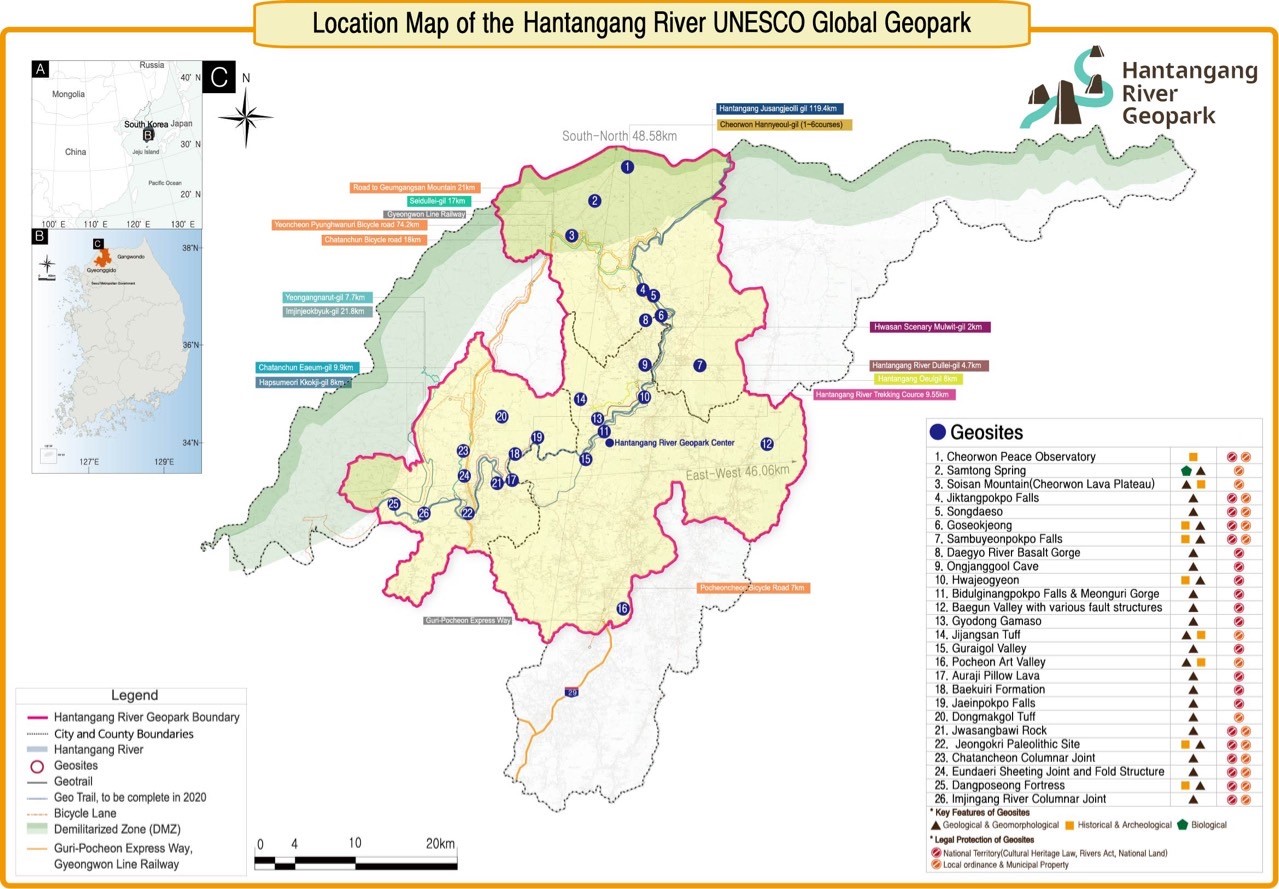
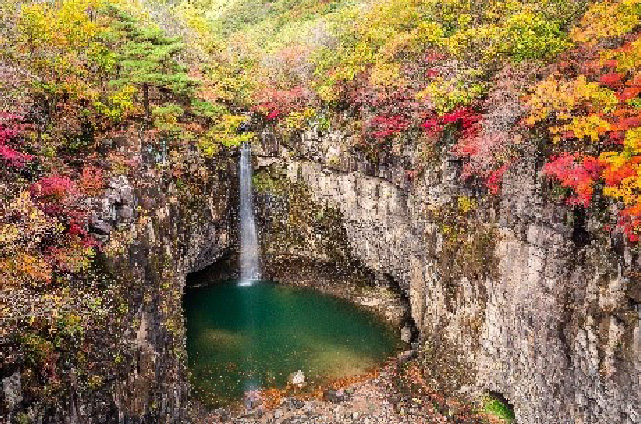
Jaein Falls
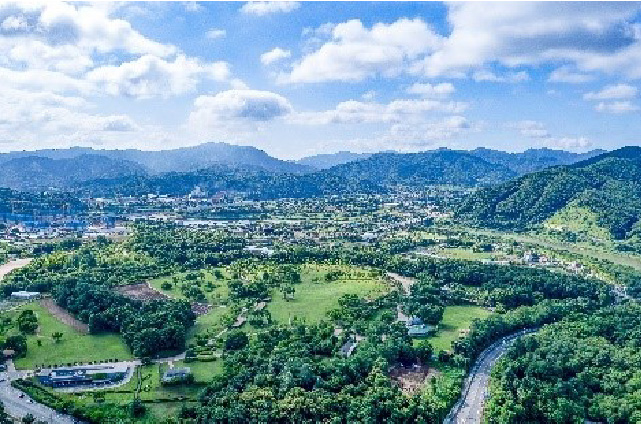
Jeongokri Paleolithic Site
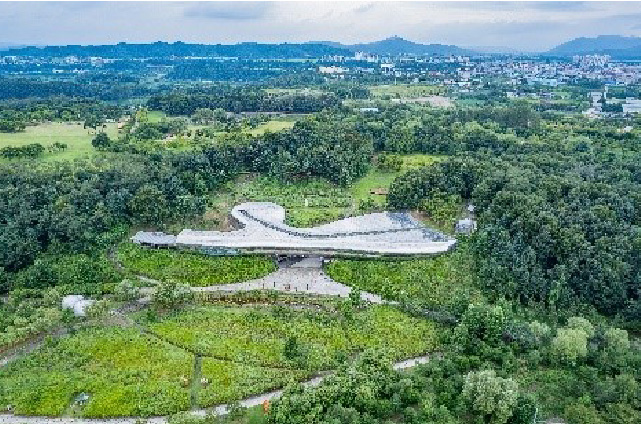
Jeongokri Paleolithic Museum
Mentoring Program
AOGS has a Mentoring Program for students and is considering expanding it to post-docs and Early Career Researchers (ECRs). It was formerly called Meet-the-Experts. This program attempts to link Undergraduate and Post-graduate students (MS and PhD) with more senior researchers in their field. Other activities will be held throughout the year outside of the AOGS conference.
For Mentees (Students)
Undergraduate and Post-graduate students (MS and PhD) are invited to meet experts in their section as part of the Meet-the-Experts (MTE) program. “Your” Expert will contact you before the meeting to set up a date and time to meet during the conference. To participate, please sign up during registration and provide the following information: your name, AOGS section, year, university, country and abstract number (if you are presenting). We will match you up with a mentor, as much as possible. This is an opportunity to meet people in your field and get contacts for future research, post-graduate study, or post-doctoral positions. Don’t worry about your English skills. We believe that participating will greatly enhance your experience at and involvement in the meeting.
For Mentors
For the Mentoring Program to work, we need Mentors to volunteer. Student(s) will be associated with Mentors based on their expertise. The email addresses of the students will be given to the Mentor(s) in order for the Mentor(s) Experts to arrange a date and time to meet those who fits with their schedule. To participate, please sign up during registration and provide the following information in details: your name, AOGS section, year, university, country, abstract number (if you are presenting). We will match you up with student(s), as much as possible. The contact will be sent ahead of time.
If you are looking for post-docs, you can look at this as the potential for an informal interview. You can make this as involved as you like. As a minimum, please meet the student sometime during the week and see their poster or presentation. You might want to go to lunch with them so you can have an extended chat on their research and interests. You might ask them for one of their paper(s). It is up to you to decide how involved you want to be. As for the time investment, it might save you time in the future to find out about a future collaborator or post-doc. You can get a lot more information on them this way than from a CV and/or a Skype, Zoom, Teams interview.
Please volunteer and participate.
